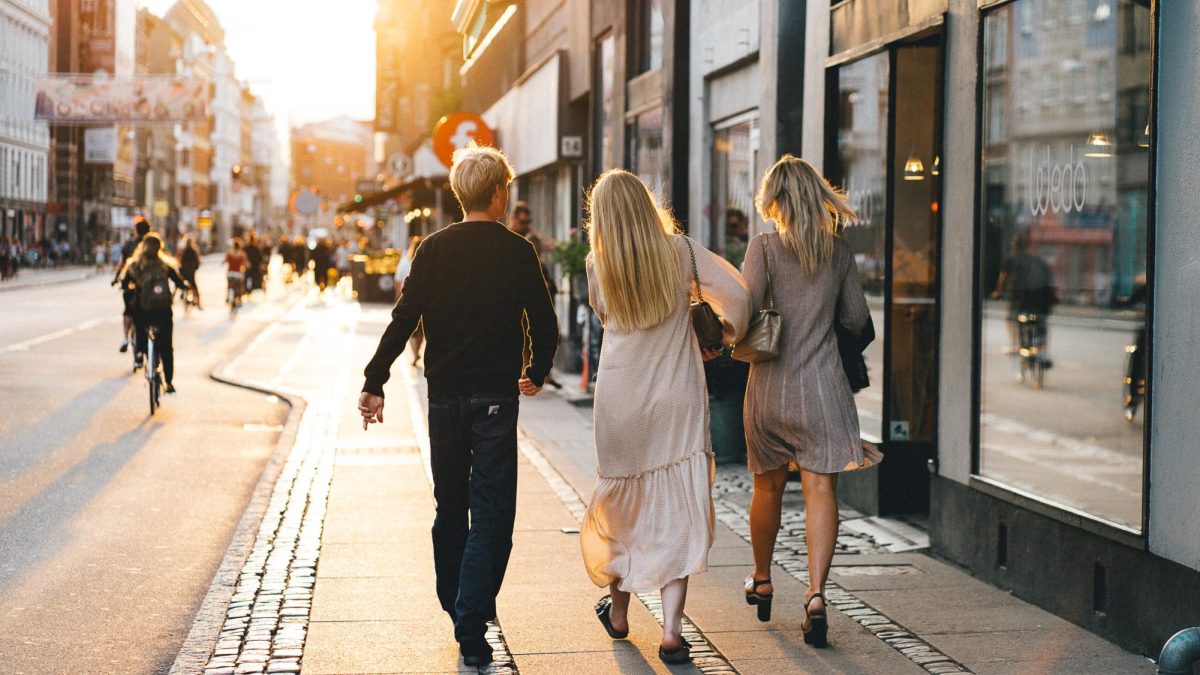New York City fashion has been all maximalist lately, featuring maxi skirts, glittering tops and dresses, and bulky cargo pants — or so I’ve noticed through my limited perception on social media. I’ve been observing the Scandinavian aesthetics of neutral tones and functionality for the past four months while studying in Copenhagen, Denmark. Through my travels to cities such as Berlin, Prague, Oslo, Rome and Dublin, I’ve noticed that what people choose to wear is attached to the place in which they live.
When I’m in New York City, I often feel the urge to switch up everything in my largely neutral and bland wardrobe, but in Denmark — especially commuting between the countryside and the city every day — I haven’t been tempted to spend all of my study abroad savings on designer items from Ganni even once. Admittedly, my commitment to the clothes I can fit in one giant suitcase, which is mostly taken up by three different iterations of a white sweater, has gotten bland in recent weeks.
I barely recall the capitalistic urge to step into Zara, Mango or Aritzia and buy everything I could to make unique, creative outfits.
Before I could even think about stepping into a Danish H&M or a pricey thrift store, though, I noticed people in Copenhagen wearing different versions of my white sweater, and the thought was immediately erased.
Similarly to some people, I prefer not to stand out with what I wear. I like to look put together. Academic, but not stuffy. Comfortable, but not sporty. The Danish have this look down. Most outfits in Copenhagen winters consist of: a quilted winter coat or puffer in a neutral tone, comfortable tennis shoes, a thick sweater in a pale or neutral tone, same with the pants which are typically slacks, slicked back hair, a crossbody fanny-pack adjacent bag and liberal sprinkings of jewelry. Although I don’t personally bike in Copenhagen, Danish outfits are optimized for this activity.
Comparatively, in New York City, almost everyone is trying to stand out in some way. Contrasting with my experiences in Denmark, I hardly remember what it felt like to walk down the streets of Manhattan. I barely recall the capitalistic urge to step into Zara, Mango or Aritzia and buy everything I could to make unique, creative outfits. What I do remember is spotting all types of people wearing the likes of short skirts and flowing floral dresses that I wish I could manage to add to my own wardrobe.
I experienced a similar phenomenon on my trip to Berlin. In mid-October, street style consisted of worn leather jackets over top thrifted shirts and pants. Cigarettes and tattoos are accessories in Berlin, and I felt bare without either. Berlin is a combination of New York City’s best hard grunge attributes, balanced with the soft sustainability and functionality of Copenhagen streetwear. It’s like being transported back into the ’90s, which is a thrifty aura most of Generation Z currently attempts to emulate.
Studying abroad is a privilege because of both the cultural experience inherent in living in another country for numerous months and the ability to observe various cultures and expressions, such as fashion, throughout the semester. Although New York City is a cultural mecca, being in a different country puts trends into perspective.
That’s all they are — trends. What means more, if you care about fashion at all, is how you fit in or stand out from your environment. I often (unintentionally) stood out as an American — especially in Italy — because I love a quality pair of jeans. I somewhat regret my penchant for traveling lightly; this meant I couldn’t purchase a T-shirt or vintage piece of clothing on any of my travels.
Yet, my travels have influenced my style choices. After visiting Berlin, I find that I don’t care that my cheap leather jacket looks worn; it gives it character beyond the classic cut and ink-black faux leather. Traveling to Rome and Florence gave me more of a sense of how to look classy and artsy — this outfit does not include denim. My experience in Denmark has taught me many ways to wrap a scarf, layer for cycling and ignore the glaring lights of shop windows.
Regardless of what outfits I wear, or whether my style changes to represent a Scandinavian-European amalgam of ease and class, I will be wearing these adventures, shrouded around my soul, with pride, like a second-skin.


